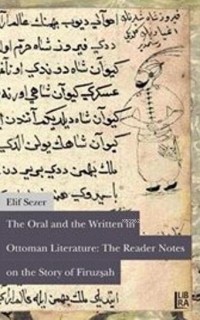
Oral and the Written inOttoman Literature; The Reader Notes on the Story of Firuzşah
| ISBN | 9786059022422 |
| Yayınevi | Libra Kitap |
| Yazarlar | Elif Sezer (author) |
| Kitap Tanıtımı | In contemporary studies of Ottoman literature, a two-layered scheme is used which divides Ottoman literature into two parts, ?folk' literature and ?court' literature. In these studies, the oral is totally attributed to folk literature, while court literature is considered entirely written. However, these two ways of producing, transmitting, and consuming literature, the oral and the written, have always existed together, nourishing and transforming each other. This thesis challenges the constructed binary opposition between the oral and the written in Ottoman literature studies, focusing on a popular work called the Story of Fîrûzşâh, widely read throughout the eighteenth century. For the purposes of this thesis, Fîrûzşâh is especially important because of its paratextual elements. The manuscript under study, actually the forty-fifth volume of the entire story, contains many marginal notes. These notes give information about the names of the public readers, and the places and dates of the public readings. In addition, there are notes that show the daily, aesthetic, and even political reactions of the readers in the eighteenth century. Depending on these reactions, four types of readers were identified and named the romantic, the pedantic, the foul-mouthed and the Janissary. Focusing on the case of the Story of Fîrûzşâh, it has been shown that aspects of oral culture and their everyday expressions can also be traced from written texts. |
Kütüphaneniz